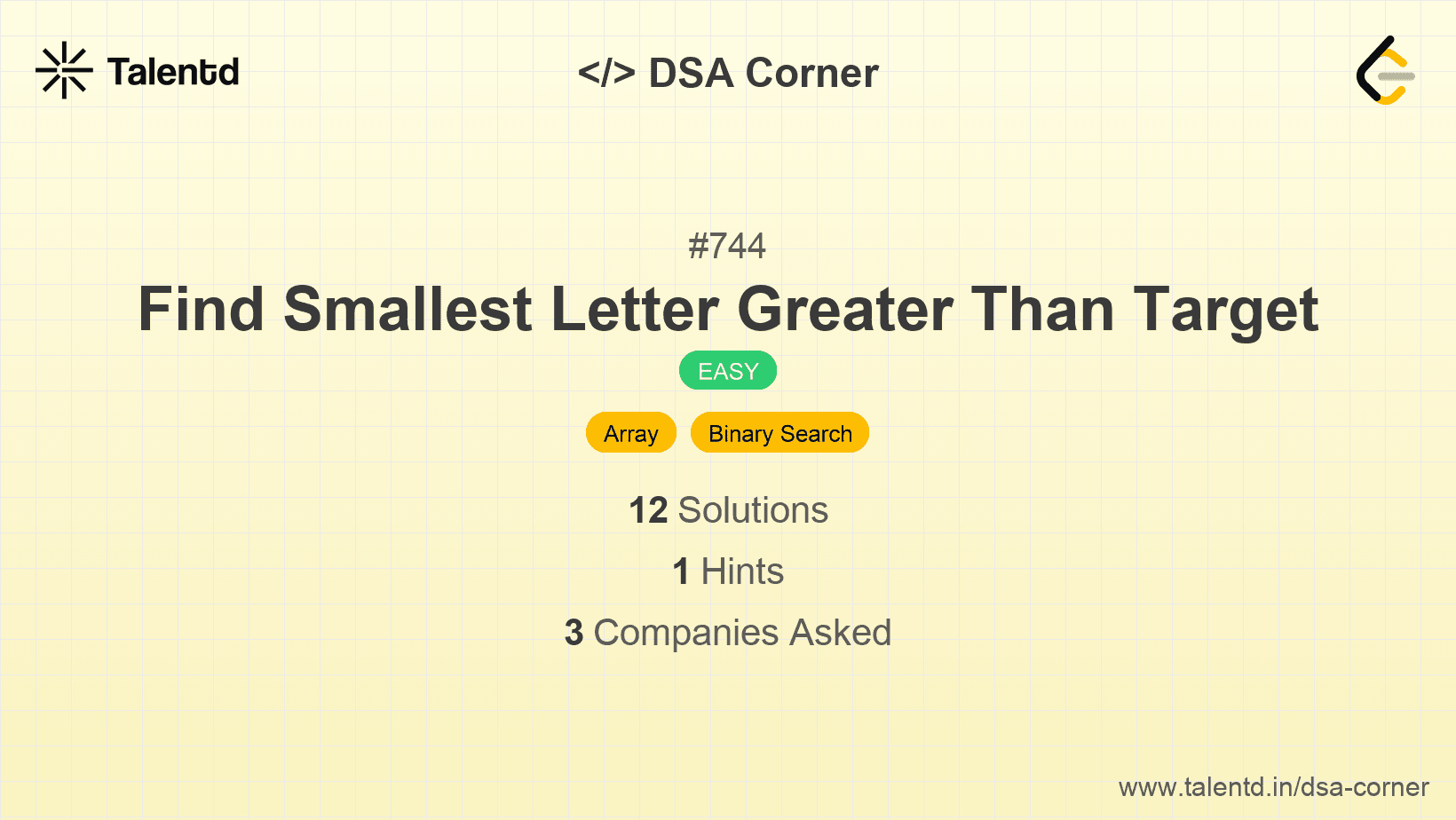
Sponsored
Sponsored
The simplest way to solve the problem is to iterate over the array and find the first character that is greater than the target character. If such a character is not found by the end of the array, the function should return the first character of the array. This approach simply checks each character in order from left to right, comparing it with the target.
Time Complexity: O(n) where n is the size of the array since each element may be checked in the worst case.
Space Complexity: O(1) as only a constant amount of space is used.
1function nextGreatestLetter(letters, target) {
2 for (let letter of letters) {
3 if (letter > target) {
4 return letter;
5 }
6 }
7 return letters[0];
8}The function cycles through each letter using a for..of loop. Upon encountering a letter greater than target, it immediately returns that letter. If no such letter exists by the array's end, it returns the initial letter for the circular condition.
Utilizing the sorted nature of the array, we can employ a binary search technique to pinpoint the smallest character that exceeds the target. By continually narrowing the search range, we can efficiently determine the desired character. If the binary search concludes without finding a suitable character, the array's initial character is returned.
Time Complexity: O(log n), hinging on halving the array.
Space Complexity: O(1), processing is constant-space.
By employing binary search, this method promptly narrows down to the desired letter. The modulus calculation at the conclusion handles any overflow due to the array's perceived circularity.